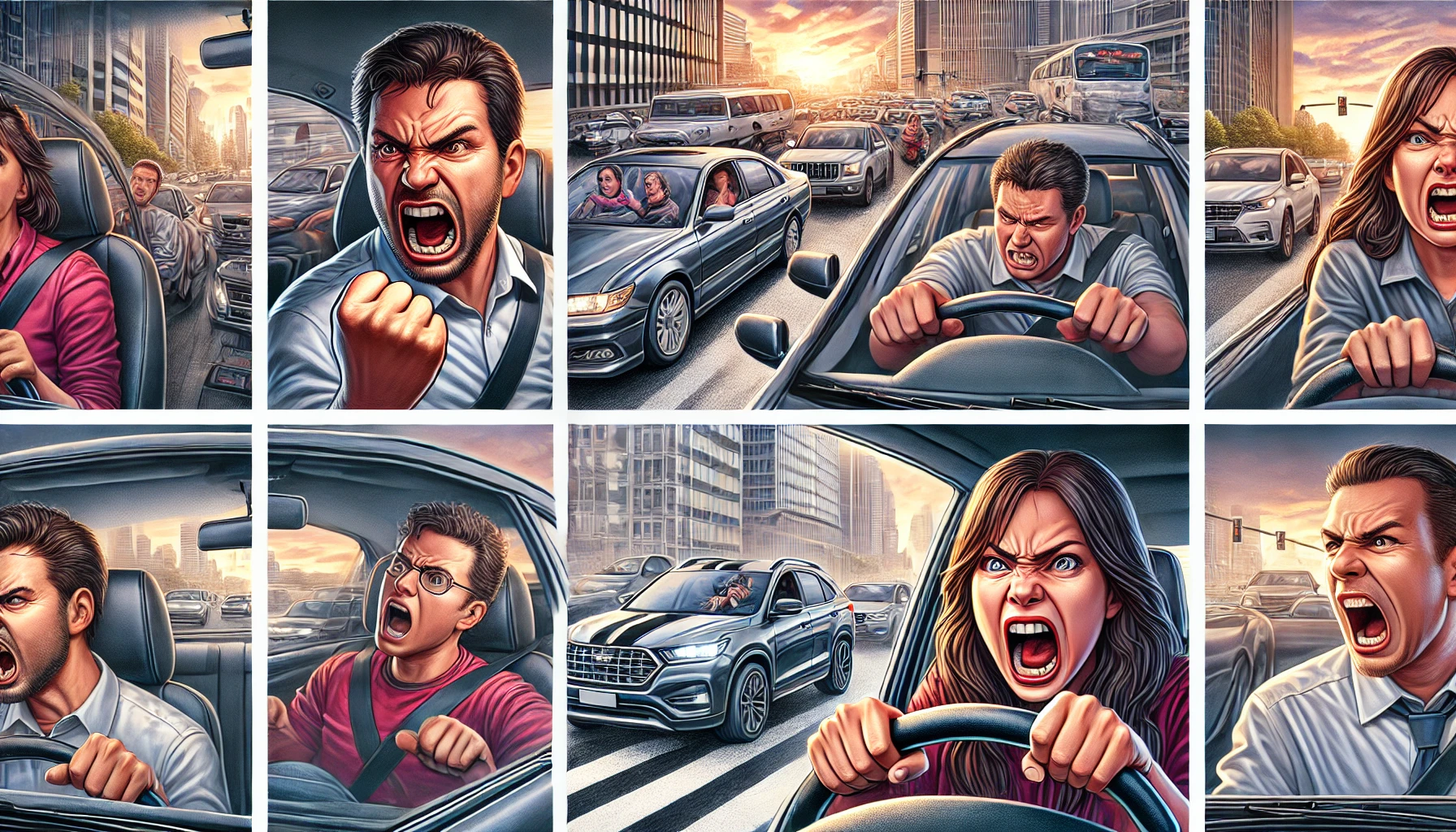Common Forms of Road Rage You Can Experience While Driving In Kenya:
Road rage refers to aggressive or violent behavior exhibited by a driver in response to traffic-related stress or frustration. This can include actions like tailgating, verbal insults, rude gestures, or even physical confrontations. It's often triggered by situations like heavy traffic, perceived slights from other drivers, or running late. Road rage can escalate quickly, leading to dangerous situations on the road, accidents, or even physical harm. To avoid road rage, it's important to stay calm, practice patience, and remember that safety is the priority while driving.
1. Tailgating: Driving too closely behind another vehicle to intimidate or pressure the driver to move faster or get out of the way.
2. Honking Aggressively: Excessive or prolonged honking, often in response to perceived slights or delays caused by other drivers.
3. Yelling or Insulting: Shouting, cursing, or making rude comments directed at other drivers, either through open windows or from within a closed vehicle.
4. Gesturing Rudely: Making offensive hand gestures, such as "flipping the bird" or waving fists.
5. Sudden Braking: Deliberately slamming on the brakes to scare the driver behind or to retaliate for tailgating.
6. Speeding: Driving at excessive speeds in anger, often weaving through traffic to get ahead or to express frustration.
7. Blocking Lanes: Deliberately slowing down or stopping in a lane to prevent another driver from passing or merging.
8. Chasing or Following: Pursuing another driver aggressively, sometimes after a perceived traffic offense or confrontation.
9. Cutting Off Other Vehicles: Abruptly swerving in front of another car, often without signaling, to retaliate or assert dominance on the road.
10. Getting Out of the Vehicle: Exiting the car to confront another driver physically or verbally, which can escalate the situation to violence.

Impact of Road Rage Includes:
1. Accidents and Injuries
Road rage often leads to aggressive driving behaviors, which increase the likelihood of collisions. These accidents can result in serious injuries or fatalities for drivers, passengers, and pedestrians.
2. Increased Stress and Anxiety
Experiencing or witnessing road rage can lead to heightened stress and anxiety for all involved. This can have lasting psychological effects, including a fear of driving or increased tension while on the road. In Kenya, most female drivers experience bullying on the road which makes it difficult for them to get used to driving.
3. Legal Consequences
Aggressive driving behaviors associated with road rage can lead to legal repercussions, including fines, license suspension, or even criminal charges if the situation escalates to violence or endangerment. Kenyan Government still needs ensure that all drivers who break the law do not get away with it.
4. Damage to Vehicles and Property
Road rage incidents often result in damage to vehicles, either through collisions or intentional acts of vandalism. This can lead to expensive repairs and increased insurance premiums.
5. Negative Social Consequences
Road rage can damage relationships, especially if the incident involves someone known to the driver or is witnessed by others. It can also create a negative image of the driver in the eyes of others.
6.Loss of Focus and Poor Decision-Making
Drivers experiencing road rage may become distracted and make poor decisions, such as running red lights, ignoring traffic signals, or engaging in dangerous maneuvers, further increasing the risk of accidents.
7. Increased Traffic Congestion
Road rage incidents can cause traffic disruptions, as they may lead to accidents, road blockages, or even altercations that cause other drivers to slow down or stop, exacerbating congestion.
How Can You Keep Safe With The Kenyan Driving Culture ?
1. Stay Calm and Patient
Practice mindfulness and deep breathing to stay calm, even in frustrating situations. Remind yourself that getting angry won’t help you reach your destination any faster.
2. Leave Early and Plan Ahead
Allow extra time for your journey to avoid stress from being late. Plan your route in advance, considering potential traffic delays.
3. Avoid Aggressive Driving
Refrain from tailgating, speeding, or making sudden lane changes. Use your turn signals and give other drivers plenty of space.
4. Don't Engage with Aggressive Drivers
If another driver is behaving aggressively, don’t respond or escalate the situation. Avoid eye contact, don’t retaliate, and if necessary, change lanes or take a different route.
5. Use Polite Gestures
If you make a mistake on the road, acknowledge it with a friendly wave or gesture to apologize. This can defuse potential anger from other drivers.
6. Control Your Environment
Listen to calming music or a podcast to keep your mind off stressful driving situations. Adjust your car’s temperature and seating to make your ride more comfortable.
7. Practice Defensive Driving
Be aware of other drivers and anticipate potential hazards. Keep a safe distance, especially in heavy traffic, and be prepared to react calmly to sudden changes.
8. Take Breaks on Long Drives
If you’re feeling tired or stressed during a long drive, pull over at a safe location to rest. This helps prevent fatigue and reduces the risk of losing your temper.
9. Educate Yourself and Others
Participate in or promote safe driving courses that focus on managing emotions and avoiding road rage. Sharing knowledge with friends and family can also help them stay calm on the road.
10. Use Technology Wisely
Apps that provide real-time traffic updates can help you avoid congested areas that might trigger frustration. Hands-free devices can also keep you focused on the road.
11. Report Aggressive Drivers
If you encounter an extremely aggressive driver, it may be necessary to report them to the authorities. This can help prevent dangerous situations and protect other road users.

